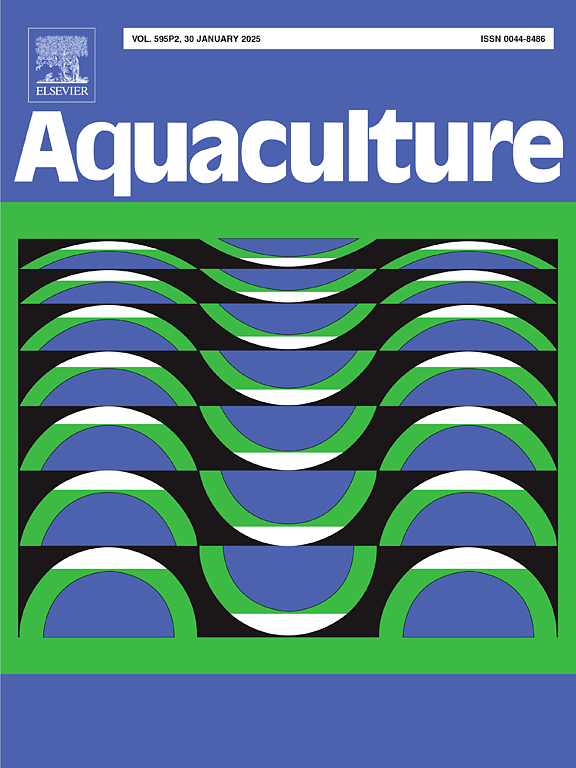Knockout of the fih gene by CRISPR/Cas9 enhances the hypoxia tolerance in grass carp (Ctenopharyngodon idella)
IF 3.9
1区 农林科学
Q1 FISHERIES
引用次数: 0
Abstract
Grass carp (Ctenopharyngodon idella), a key freshwater fish species in China, is threatened by hypoxia in aquaculture due to high stocking densities and climate change. Factor inhibiting hypoxia-inducible factor (FIH), an asparagine hydroxylase that represses the expression of hypoxia-inducible factor (HIF), inhibits the transcription of hypoxia-responsive genes by blocking interactions between HIF and the coactivators CBP and p300. In this study, we used CRISPR-Cas9 genome editing to generate fih-deficient heterozygotes of grass carp. Our study demonstrates that individuals with a deletion of the fih gene exhibit significantly enhanced hypoxia tolerance compared to wild-type grass carp, as evidenced by the critical oxygen tension at which equilibrium is lost (LOEcrit). Furthermore, although the hypoxia tolerance of grass carp has increased, fih gene knockout did not have a significant impact on their growth and development. We performed real-time quantitative PCR and TUNEL staining to assess hypoxic responses in fih-deficient grass carp, and accordingly found that compared with the wild grass carp, certain hypoxia-responsive genes, including hif1α, phd3, and glut1, were upregulated in fih-deficient individuals. Additionally, we established that, under hypoxic conditions, levels of apoptosis in the gills and brains of fih-deficient fish were significantly lower than those in their wild counterparts. These findings indicate that fih plays an essential role in hypoxia tolerance of grass carp and providing candidate genes for the genetic breeding of hypoxia-tolerant varieties.
求助全文
约1分钟内获得全文
求助全文
来源期刊

Aquaculture
农林科学-海洋与淡水生物学
CiteScore
8.60
自引率
17.80%
发文量
1246
审稿时长
56 days
期刊介绍:
Aquaculture is an international journal for the exploration, improvement and management of all freshwater and marine food resources. It publishes novel and innovative research of world-wide interest on farming of aquatic organisms, which includes finfish, mollusks, crustaceans and aquatic plants for human consumption. Research on ornamentals is not a focus of the Journal. Aquaculture only publishes papers with a clear relevance to improving aquaculture practices or a potential application.
 求助内容:
求助内容: 应助结果提醒方式:
应助结果提醒方式:


